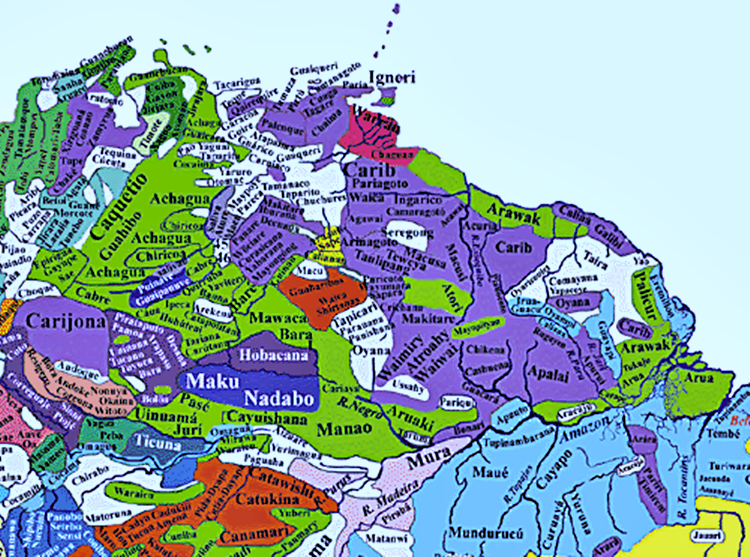Native Languages & Dialect
The Languages that are historically native within the Caribbean, or in South America and Central America and migrated with Amerindians / Mesoamericans into the Caribbean region include: Taino (Arawak, Lucayan (Arawak), Borequino (Arawak), Carib.
These languages are essentially extinct within the Caribbean region. Some forms of Arawak languages of the Maipuran subgroup are still spoken by inland Amerindian tribes within the nations of Colombia Venezuela, with a form of Arawak still spoken in Suriname and a Creole Arawak language known as Garífuna still spoken extensively by Afro-Indians (Garinagu) in Belize, Honduras, Nicaragua and Guatemala.
Languages Imported To the Caribbean Region:
In addition, there are several dozen dialects of Mayan spoken within the Yucatán Peninsula and Central America and there are several dozen indigenous native languages spoken within the Central and South American Caribbean region. English, French, Spanish, Dutch. West African languages of Ashante, Fante, Ibo, Twi, Yoruba, Fulani, Wolof (all which are no longer spoken in their native form) Hindi.
To better comprehend the geographic dominance of the Caribbean by the different Amerindian groups, look at how the area was populated and where the dominant groups were mostly concentrated. The map shows the great diversity of individual languages in the Amazon and Orinoco Basins. Major language families, grouped by colors, include Arawakan (green), Carib (purple), and Tupi-Guarani (blue).

Arawakan was the largest single family, including the Taino in the Greater Antilles, representing Neo-Indian migrations after AD 200. Arawakan (green) includes 74 languages, divided into Aruan, Guahiban, Harakmbet, and Maipuran branches. Later migrants to the Antilles were the Caribs, whose languages (purple) are divided into two branches, 21 Northern and 8 Southern.
Some 70 Tupi-Guaraní languages (blue) are grouped into nine branches centered in southern Amazonia, one dialect serving as a trading lingua franca during the Colonial and recent periods in Amazonia. A total of 34 language families and over a dozen isolated stocks combining about 1000 individual languages have been identified in South America.
 Skip Nav
Skip Nav